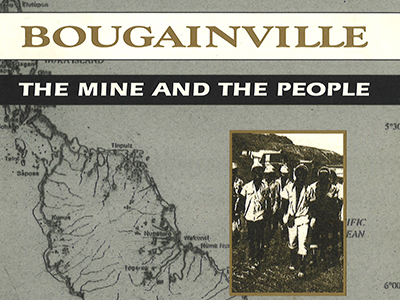30 April 2019
It is rapidly approaching 30 years since production at the Panguna mine ended on 15th May 1989.
The reasons for the closure are of course well-known and should never be ignored and nor should the benefits that the mine brought to Bougainville during its 27-years of operation.
In both respects it is timely to acknowledge the excellent book – Bougainville: the mine and the people – by the late Paul Quodling, who was associated with Bougainville Copper Limited (BCL) for more than 20 years and served as chief executive for a decade until his retirement in 1987.
The book presents both unique and thoughtful insight from someone with intimate knowledge of the mine’s operations and who was extremely well-regarded in Bougainville. It examines the complex socio-political issues relevant to the mine’s operations and eventual closure as well as the economic benefits.
For example, at the time of the mine’s suspension the book notes that annual production levels sat at around 550,000 tonnes of concentrate which contained 170,000 tonnes of copper, 15,000 kilograms of gold and 50,000 kilograms of silver.
According to other estimates, in the 17 years prior to 1989, the mine produced three million tonnes of copper concentrate, 306 tonnes of gold and 784 tonnes of silver. If we are to consider unrealised yield, a 2012 order of magnitude study concludes that that the Panguna mine contains a further 1,838 million tonnes of resource which offers the potential of more than 25 years of productive life under any future redevelopment.
Looking back provides some pointer to the types of benefits a large-scale mining project can bring. Mr Quodling noted that the direct cash benefits of the mine’s operation between 1972-1989 to government, landowners and investors was around K1.75 billion at that time. In terms of the national economy, sales of the mine’s resources generated 40-50 per cent of total foreign exchange with contributions to the national budget of 15-20 per cent of all internally generated revenue.
Regarding employment, in December 1988, BCL had a total of 3,560 employees on its payroll of which 2,950 or 83 per cent were PNG nationals. Bougainvilleans made up around 35 per cent of the workforce. Total employment numbers gradually declined through the 1980s which reflected a deliberate policy of engaging local contractors in the provision of mining-related goods and services.
The overseas make-up of the workforce also declined over time as a result of training and localisation initiatives. Many school-leavers found employment opportunities with the mine or in mine-related services industries. During the mine’s life around 12,000 people were trained, including around 1,000 who competed full-trade apprenticeships and some 400 who completed graduate and post-graduate studies.
During the mine’s construction and development phase the demand for goods and services was in part met by the local community and this demand helped foster the development of various local enterprises.
The organisation of the mine’s food buying requirements for example through rural consolidated agencies opened-up a lucrative market for garden-style cash crops.
Ancillary services functions also created new opportunities for local contractors in areas such as the provision of labour, transport, construction and security. Through the Bougainville Development Corporation there was also a focus on the fostering of mid-sized ventures. Its areas of initiative included air services, steel fabrication, catering services, furniture manufacturing and livestock processing.
It is estimated that any future redevelopment of Panguna would require investment of US$4-6 billion during the project construction phase alone. The production phase would generate significant ongoing taxation and other revenues and the multiplier effects in terms of training and employment, business and infrastructure development would again be sizeable.
But against this backdrop is the need to manage the types of complex social and political dynamics that Paul Quodling also frankly explores in his book. The reality he highlights is that a project like Panguna will never realise its full potential without strong and enduring community support and sensitive issues management. In this regard Panguna’s past is an invaluable teacher.


